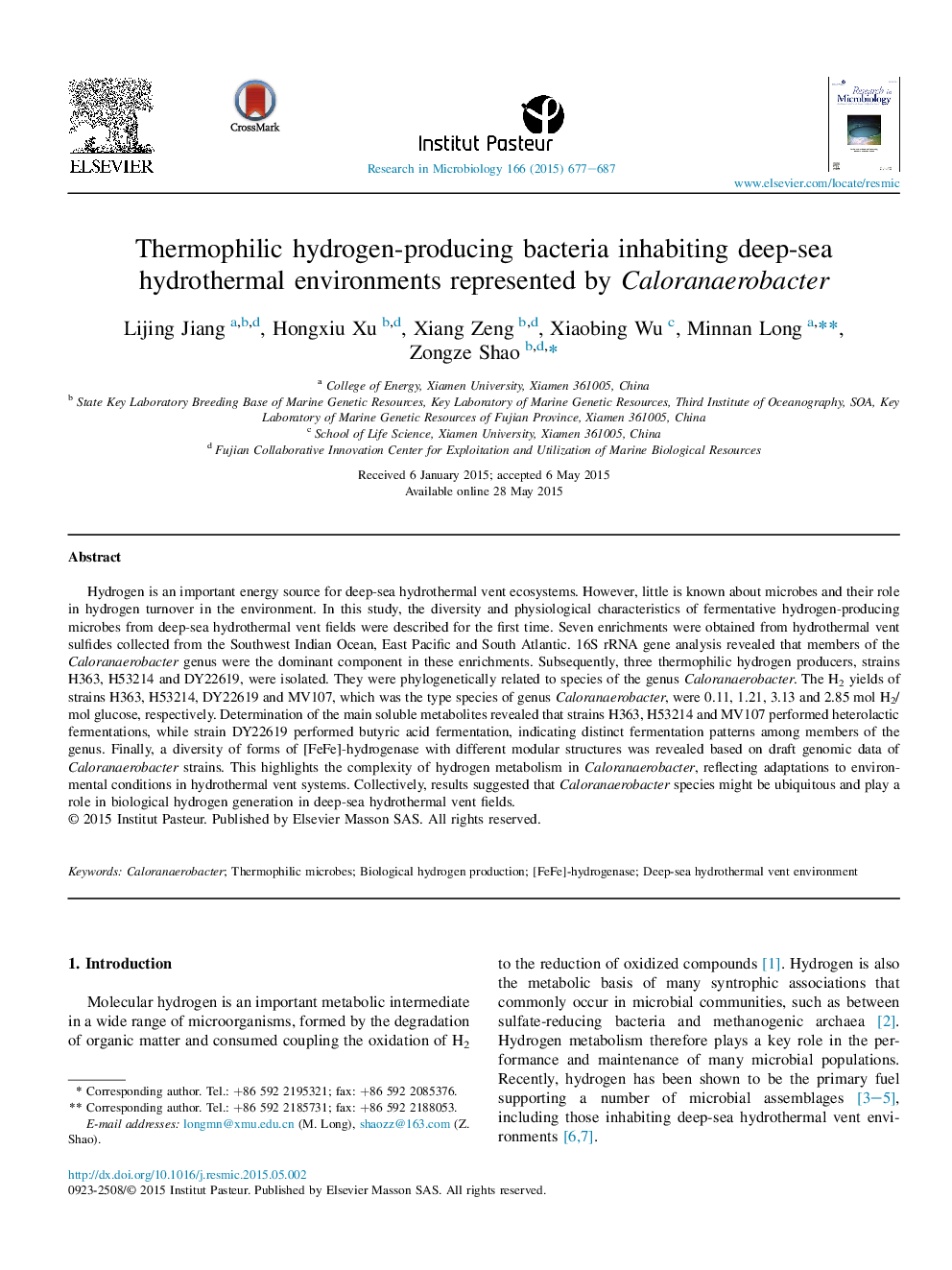| Article ID | Journal | Published Year | Pages | File Type |
|---|---|---|---|---|
| 4358412 | Research in Microbiology | 2015 | 11 Pages |
Hydrogen is an important energy source for deep-sea hydrothermal vent ecosystems. However, little is known about microbes and their role in hydrogen turnover in the environment. In this study, the diversity and physiological characteristics of fermentative hydrogen-producing microbes from deep-sea hydrothermal vent fields were described for the first time. Seven enrichments were obtained from hydrothermal vent sulfides collected from the Southwest Indian Ocean, East Pacific and South Atlantic. 16S rRNA gene analysis revealed that members of the Caloranaerobacter genus were the dominant component in these enrichments. Subsequently, three thermophilic hydrogen producers, strains H363, H53214 and DY22619, were isolated. They were phylogenetically related to species of the genus Caloranaerobacter. The H2 yields of strains H363, H53214, DY22619 and MV107, which was the type species of genus Caloranaerobacter, were 0.11, 1.21, 3.13 and 2.85 mol H2/mol glucose, respectively. Determination of the main soluble metabolites revealed that strains H363, H53214 and MV107 performed heterolactic fermentations, while strain DY22619 performed butyric acid fermentation, indicating distinct fermentation patterns among members of the genus. Finally, a diversity of forms of [FeFe]-hydrogenase with different modular structures was revealed based on draft genomic data of Caloranaerobacter strains. This highlights the complexity of hydrogen metabolism in Caloranaerobacter, reflecting adaptations to environmental conditions in hydrothermal vent systems. Collectively, results suggested that Caloranaerobacter species might be ubiquitous and play a role in biological hydrogen generation in deep-sea hydrothermal vent fields.
